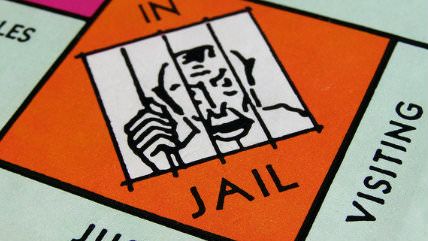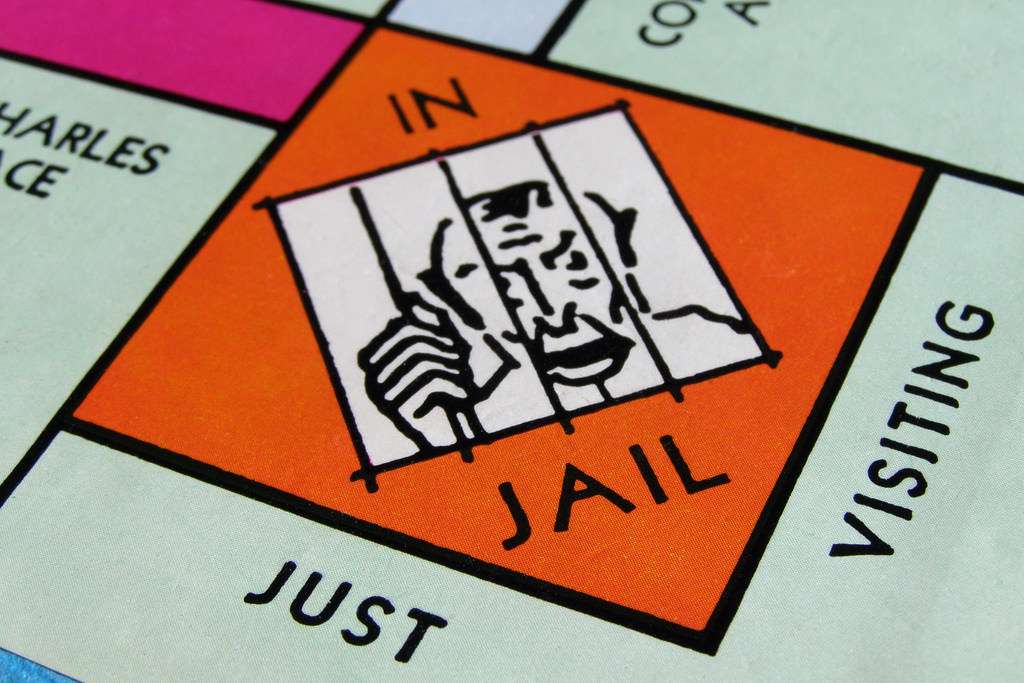Go Directly to Jail—And Then Stay There: How the Misuse of Jails Is Fueling America's Overincarceration
People "are held in jail simply because they are too poor to pay what it costs to get out."


There are more than 3,000 jails in the United States, handling somewhere near 12 million admissions annually. While much of the nascent conversation around criminal justice reform in America has focused on federal and state prisons, a new report from the Vera Institute of Justice serves as a reminder that jails can also be hotbeds of injustice. In "Incarceration's Front Door: The Misuse of Jails in America," the organization argues that jails are one of the chief drivers of problems with our criminal justice system.
Though people often use the terms jail and prison interchangeably, prisons are the state and federal institutions where convicted criminals are sentenced to spend time. Jails are locally run facilities designed largely to hold people who have been arrested while they await arraignment or trial.
"The report's encyclopedic examination of jail use—who's in jail and the myriad paths leading there—is meant to inform," writes Vera Institute President and Director Nicholas Turner in an introduction. "But it should also unnerve and incite us to action. As Vera's president, I observe injustice routinely. Nonetheless even I—as this report came together—was jolted by the extent to which unconvicted people in this country are held in jail simply because they are too poor to pay what it costs to get out."
Jails were originally intended to detain people at length only when those individuals were deemed too dangerous to be released back into the community while awaiting trial or sentencing. But in practice, they have become repositories for all sorts of non-violent offenders who simply can't afford to pay a few hundred dollars to get out.
Turner was "startled" by the number of people detained in jail "for behavior that stems primarily from mental illness, homeless, addiction," or kept for minor violations of the law such as driving with a suspended license or public intoxication. "Even a brief stay in jail can be destructive to individuals, their families, and entire communities," he writes. "Single parents may lose custody of their children, sole wage-earners in families, their jobs—while all of us, the taxpayers, pay for them to stay in jail."
Some facts from the Vera Institute report:
- Today, three-fifths of people in jail are legally presumed innocent.
- Nearly 75 percent of the jail population is there for nonviolent traffic, property, drug, or public order offenses.
- The number of annual jail admissions nearly doubled, from six million in 1983 to 11.7 million in 2013. ("Notably, much of this growth in jail use tracks the rise of drug crime enforcement," the report states.)
- The average length of a jail stay increased from 14 days in 1983 to 23 days in 2013.
- Nearly 15 percent of jailed men and 31 percent of women have a serious mental illness (which includes bipolar disorder, schizophrenia, and major depression), while 68 percent have a history of drug and/or alcohol abuse.
Jails have become "de facto mental hospitals" and detox centers, the Vera Institute warns. This "is at odds with the design, operation, and resources in most jails. Characterized by constant noise, bright lights, an ever-changing population, and an atmosphere of threat and violence, most jails are unlikely to offer any respite for people with mental illness. Coupled with the near-absence of mental health treatment, time in jail is likely to mean further deterioration in their illness."
The vast majority of mentally ill individuals who go to jail do not receive any treatment while there. And while most are jailed for non-violent and non-serious offenses, they wind up locked up for longer than average periods of time. In Los Angeles, for example, mentally ill individuals spent an average of 43 days in jail, compared to 18 days for the general population.
While in jail, individuals can easily accumulate quite a tab for their confinement, as many systems now charge directly for services, from clothing and laundry to functions such as booking to any court-ordered rehabilitative programs required. "For many, these payments are impossible to make," notes the Vera Institute. This then leaves them vulnerable to re-incarceration for failure to pay their criminal justice debt.


Show Comments (17)